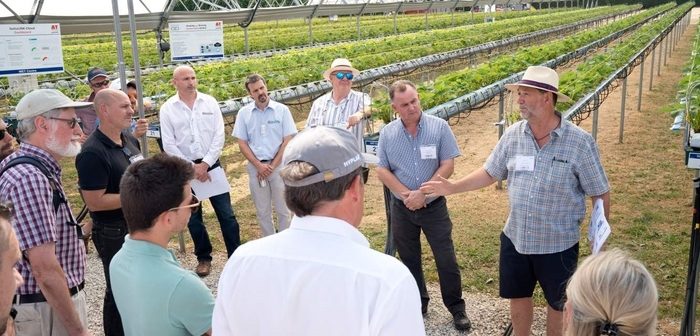The UK has just 27 weeks of parliamentary time left before the Brexit date, and fruit growers are desperate for assurances that labour supply will be secured.
According to speakers at Fruit Focus, the leading British event for the industry, labour is the single biggest concern affecting growers across the fruit and wine sectors. “As the Government is stepping up its preparations for ‘No Deal’ we need to understand how that works for us with access to workers,” said Nick von Westonholz, director of EU exit and international trade at the NFU. “We also need as near to frictionless trade as possible – there are huge risks to navigate.”
Ali Capper, chair of the NFU horticulture board, said that in September last year there was a 29% shortfall in workers compared to vacancies – and predicted a similar catastrophe this year, with top and soft fruit harvests likely to collide. “Politically, we are no further forward than this time last year: We have a brick wall.”
Providing free movement of labour could be secured, those farms which had the best reputation would be the ones that attracted the best staff, explained John Hardman, director of Hops Labour Solutions. “Farms which provide the best facilities, working conditions and pastoral care will always be the employers of choice.”
With labour making up between 30% and 70% of horticulture businesses’ costs, there were opportunities for robotics and artificial intelligence to trim costs and boost productivity, said Dr Debbie Wilson, head of horticulture knowledge exchange at AHDB.
But they weren’t a replacement for farm staff. “The pragmatic view is that it will be labour and robots working together.” Examples included augmented reality crop monitoring, pest counting, and GPS picking platforms, as well as drone technology, once the regulatory environment caught up, she added.
Demonstrating the value of autonomous tractors and new technology at the show were NP Seymour and Kirkland, with the latest equipment to boost efficiencies and reduce soil compaction.
Industry research and development was front and centre at the show, attended by 1,200 growers and industry professionals. Visitors were impressed by the NIAB EMR Water Efficient Technologies (WET) Centre, which has reduced the use of water, fertilisers, pesticides and energy by 20% while increasing strawberry yields by up to 10%.
With the dry summer focussing attention on water abstraction and use, adopting more precision techniques could help growers expand production without increasing their input costs, said Paul Dracott at NIAB EMR.
New Leaf Irrigation, which supplied some of the technology for the WET Centre, was also analysing rainwater harvesting and automated water storage technologies, explained managing director Darran Grieveson. “We should have had 80mm of rain in June and July – instead we had 1.6mm. If you haven’t got water you haven’t got a business.”
Helping growers to maximise their use of resources was the James Hutton Institute, which gave visitors their first sight of the new Glen Carron raspberry variety. “The idea behind the whole breeding programme was to breed something sustainable for the whole supply chain,” said soft fruit breeder Nikki Jennings.
Offering an exciting glimpse into the future was Ed Herbert from Dogtooth Technologies, with his robotic strawberry picker. “In four years we expect robots will be picking 15% of UK tabletop production,” he predicted. “And they can pick overnight, dramatically increasing the storage life of soft fruit. But they won’t replace labour: If there are no workers to plant our strawberries our robots will have nothing to harvest.”
However, there was plenty to be optimistic about, particularly in the wine sector, which was booming, said David Parkinson, chief executive officer of Wine GB. “We will produce 6m bottles of wine this year; by 2040 we expect that to increase to 40m, creating 20,000-30,000 new jobs in agriculture.”
Wine GB has benchmarked the industry and compared it to other regions which had grown similarly fast over the past 20 years or so. “The industry is very new – now we can go to the Government and ask for the right support to help it grow,” he added. “Building wine tourism into the South East also offers tremendous uplift – it’s a real success story.”




